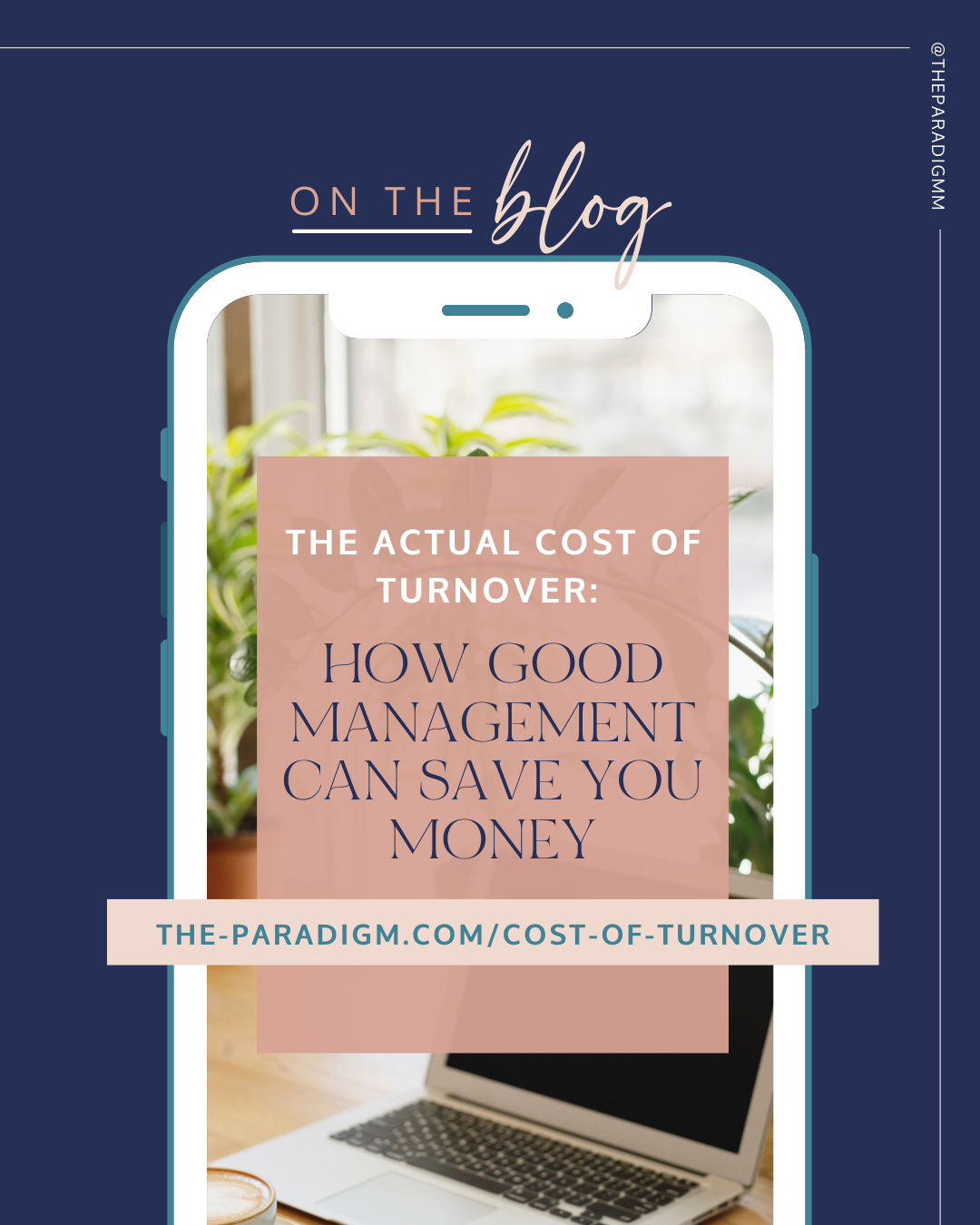August 18, 2022
by Kiley VanGilder
No company builds a team expecting their management team to poorly perform their essential duties….like managing their team. However, studies show that over half of employees plan to leave their current job due to a toxic work environment. A work environment is built and supported by the management team and oftentimes in small business, the leadership team. So why are so many management and leadership teams *accidentally* failing their employees? Let’s take a deep dive.
Managers are not undergoing the proper training to manage a team, the right way.
While many are given the title because they have the right personality, or it is the next step in their field, many are not properly trained to manage people. It’s highly applauded to promote the employees who perform well and are dedicated to the team, or onboard the long-term contractor to an employee role. But a management role is a very specialized role that requires training to learn how to manage people. While some carry a strong work ethic or skillset, sometimes that skillset does not transfer over to being good at managing a team. At least not without proper training.
Just like a graphic designer must learn the ins-and-outs of Photoshop or Canva, a manager must learn the ins-and-outs of team management. It is just as important, if not more important, to train your managers on leading a team as it is to ensure the rest of the employees have the skills to complete their job duties.
The direct impact of poor management can look like:
Reduced employee engagement.
Managers interact with their team regularly, so it makes sense that they have a significant impact on employees’ overall engagement. Employees don’t join a company to work under poor management. In fact, employee’s are judging the company and management from the moment they show up for an interview and continue to do so until trust is built, just as we employers do to candidates and employees. Showing up for your employees, or potential employees, by properly training your management team will keep employees engaged and committed to doing a good job for not only themselves and the company, but also their managers.
Reduced productivity.
When employees are unhappy with their managers, they oftentimes lose motivation and the desire to do a good job. Even the most self-motivated employees can end up falling short if they are unhappy with their boss. Once this happens, the output of high quality work is likely to plummet.
Turnover.
The number one reason employees leave their job is poor management. Think about it, no employee who has a great working relationship with their boss is likely going to look elsewhere. Good working relationships are the key to employee longevity.
Turnover is one of the most costly hits a small business can take.
The cost of bad management can be up to 400% of an employee’s annual salary. No, that is not a typo, 400% is the reality of having a management team that does not know how to properly manage. That might sounds drastic, but let’s break this down.
When you lose an employee, you lose out on up to 40 hours a week of work being completed for your company. Then there’s the time to build and post a job ad, wait on ideal candidates to apply (this can take weeks, sometimes months), review all of the applicants, schedule numerous interviews, bring in other team members to help make the best choice for the role, and then finally offer the job. It doesn’t end there. The standard timeframe before an employee can begin employment is approximately 2 weeks. Once they actually begin work, you have a 90 day introductory period where all things training takes place. During this time, you or someone from management is pulled in to train the employee and then review and correct those bound-to-happen mistakes. *Hopefully* by 90 days, the new employee is moving at an efficient and fairly speedy pace through the work, but not always.
This whole timespan can truly range from 3-9 months depending on how long it takes to hire and train the employee, which will vary from position to position. Throughout all of that, you or another member on your team will be pulled to do hiring, onboarding and training on many occasions, resulting in not only the loss of productivity from one role, but a second. On top of it all, during the 90 day introductory period, you’re paying someone to be trained, which doubles your losses, you’re not only paying someone to be trained to do a job, the job is still not being done (or is being done at a much slower rate).
All of this is to say your company needs good management and your management team needs good training so your employees want to work for you (forever). Kidding, but that’s kind of the hope, right?
Here at Paradigm we’ve created the management training you, your leadership, or management team can learn from and thrive off of in your workplace after! Join us for the next round live with Kira herself and find out what a great manager can do for your company and your employees. Sign Up Here!

